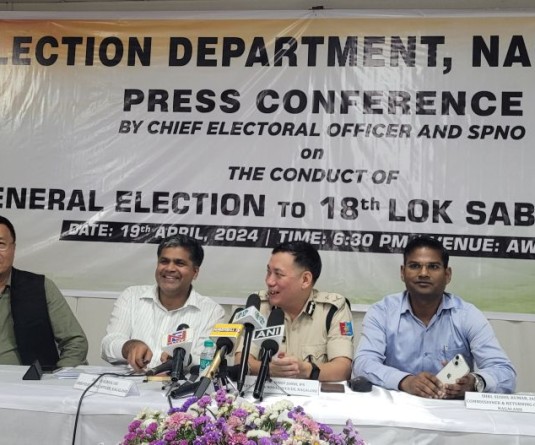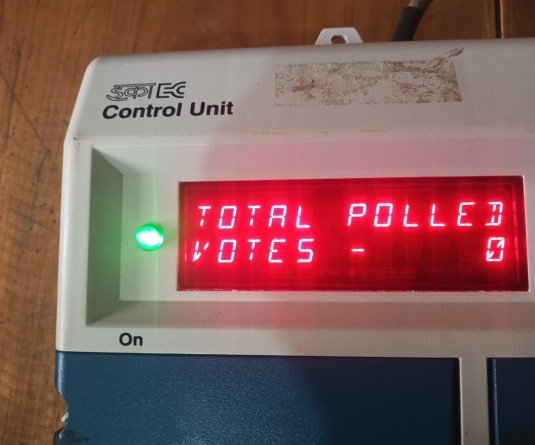
Morung Express News
Dimapur | December 4
How can we read something that is not translatable and how do we reflect on the ‘afterlives’ of materials once they find their way back to the community?
These were the two pertinent questions which Dr Arkotong Longkumer of Edinburgh University navigated during the 4th U.A. Shimray Memorial Lecture entitled ‘Prophetic Textuality: The Gaidinliu’s notebook as Language and History’ at Hotel Acacia in Dimapur on December 3.
Friends and family of the late Ungshungmi A. Shimray, a young Naga scholar and researcher from Ukhrul, who died in Bangalore on May 6, 2009, hosted the event.
The “magic books”
According to Dr. Dr. Longkumer, the notebooks first came into prominence in 1932 when the British were trying to quell an uprising among the Zeliangrong people of Northeast India in the present states of Manipur, Assam, and Nagaland.
The Zeliangrong leader Jadonang and his distant cousin Gaidinliu were at the forefront of this “uprising” with the motive to oust the British from the region, stop the spread of Christianity, and to “reform” their own indigenous religion so that it would meet the challenges of the modern world.
In the late 1970s, this movement came to be known as Heraka.
The notebooks were initially likened to mere “scribbles by an illiterate young woman” by anthropologist-administrator, J.P. Mills but it did not stop him from confiscating the same, allegedly uneasy over the influence it hold over her followers.
“Magic books of the sorceress Gaidiliu [sic] captured with her other property in March 1932,” JS Mill wrote after the confiscation.
Dr. Longkumer said it could also suggest that Mills took the power of Gaidinliu and the notebooks seriously- to prevent the spread of her influence. The action by Mills forever imprisoned the notebooks, rendering them dormant in the colonial museum. Dr. Longkumer said he was also initially skeptic about the book.
‘Afterlives’ of the book and its pervasiveness
No one possessed the notebooks in their entirety, he added but considered it her artifacts through which she wrote her messages for her followers. “Her literary power gave her immense prestige and she used to send written messages to her adherents coupled with verbal messages to explain what they meant.”
After accessing photocopies of the notebooks, Dr. Dr. Longkumer said he reflected on the ‘afterlives’ of the book after he took the copies to the Zeme community.
The notebooks highlighted a number of theoretical issues in approaching texts, particularly since these were written in a language that is “untranslatable,” he added.
“What is the relationship between a text that is untranslatable on the one hand and its value to a community on the other?”
In this regard, he argued that Gaidinliu notebooks required many layers of interpretation that included different modes of communication, and how experience plays a central role in understanding these dynamics.
Different approaches for interpretation
Dr. Longkumer examined the book under three interpretations. First, as a form of “talismanic” power drawn from Chinese traditions representing “legible” and “illegible” between the “spirit” and “human” world.
However since talismans were often worn or digested to dispel “demons” or to protect people from any untoward incidents and the material script itself is not thought to have this power nor can it be interpreted or translated, Dr. Dr. Longkumer dismissed the notion.
Second- if it could be examined by focusing on “lost cultural property” and analyse the notebook as a kind of “literary power.” But since they are untranslatable and were possibly never intended to be translatable in the straightforward sense, the idea held less sway, Dr. Longkumer concluded.
Finally, he considered an alternative possibility by suggesting that the notebooks evoke the importance of dreams, visions, and prophecy to illustrate them as a form of textuality.
One cannot approach the Gaidinliu notebooks as a text that simply involves reading and writing but must be examined in relation to unfolding of the ‘heguangram’ (kingdom in Zeme language), Dr. Longkumer surmised.
Millenarian idea
Concluding the discussion, Dr. Longkumer described his own role in bringing back the notebooks from Oxford and giving it to the Zeme community in Haflong, Assam. He was very interested in the almost millenarian response of some of the villagers, who seemed to be waiting for the coming of better days.
Dr. Longkumer observed with some discomfiture that his returning of the notebooks was apparently considered as a step toward the coming of “the kingdom” by the some Heraka followers.
However, there was mixed reaction. In rural areas, many considered Gaidinliu’s notebooks as a “sacred retrieval”, while those in the urban areas were dismissive and skeptical.





